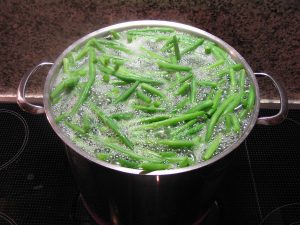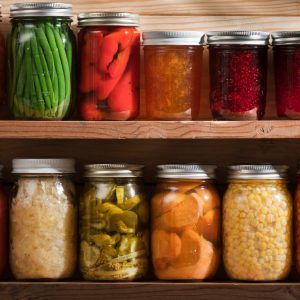Preservation by high temperature
- The temperature and time employed in heat processing of food depend upon the effect of warmth on food and also the other preservative methods employed.
Pasteurization
- Pasteurization could be a heat treatment that kills part but not all the microorganism present and involves the applying of temperature below 100-degree centigrade.
- The heat is also by means of steam, hot water, dry heat or current and also the products are cooled immediately after the warmth treatment. milk is typically pasteurized.
- Pasteurized products don’t seem to be sterile also they contain vegetative organism and sports which are still capable of growth.
- Hence many pasteurized foods must be stored under refrigeration.
- Pasteurized milk can be stored for over every week under refrigeration while pasteurized milk stored at room temperature will spoil within a day.
| FOOD | TEMPERATURE | DURATION |
| Grape wine | 82-85 | 1 min |
| Dried fruit | 65.5-85 | 30-90 mts. |
| Milk | 62.8 | 30 mts. |
| Ice cream mix | 71.1 | 30 mts. |
(The time and temperature for the pasteurization of various food products)
Source-Food science III edition, new age international publishers
Blanching
- Blanching is a heat treatment like factorization.
- It is completely by dipping the products in boiling water for 2 to 3 minutes at 180° F to 190°F .
- Blanching focuses on the product and in activating degradative enzyme before for the processing.
- Blanching is an important step in freezing food as Frozen food can develop off flavour, vitamin losses and colour changes while in storage.
- Some crucial point of blanching is prevent bacterial development, fixes the biological colour of vegetables or hold the colour.

(Blanching of vegetable)
Canning
- Canning involves the application of temperature to food that is high enough to destroy approximately all microorganism present.
- Canning is also involved airtight sealing in a sterilized container to prevent contamination.
- The degree of heat and the length of time of heating vary with the type of food and the kinds of microorganisms.
- large quantities of food are canned for preservation.
- In developed countries, canned food forms a major part of the nutriment of the people.
The process of canning
- Receiving, clearing, grading and inspecting of raw commodity.
- Blanching to the inactive enzyme.
- Placing into a compartment with added brine or syrup and degradation of the product.
- The next method is exhausting which is done by the air and the gas from the can so that its interior pressure after heating and cooling is the same as the atmospheric pressure.
- The closed jar is subjected to a high temperature to eliminate the most heat resistance organism.
- After this, the cans are chilled by water in a cooling tube to about 38 ° Celsius before storage.

